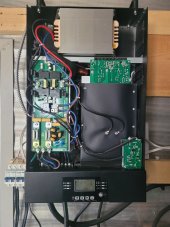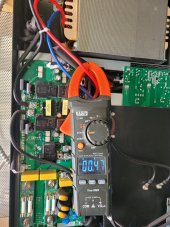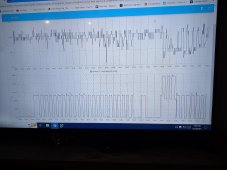Motor loads & Luxpower inverters?
The discussion that followed
@Sun in Lithium 's demonstration of the voltage swing issue when hooking up the pump has sparked considerable interest. I would like to share some insights after discussing the matter with the head of our R&D team. While this information may not be new to some, it is quite enlightening for me, as I am not an electrical engineer.
We appreciate that
@Sun in Lithium brought up this topic, and we welcome more people to point out any questioning points or weaknesses we may have. (That is how things get improved we believe)
1) Situation description.
In a running system, with stable load conditions, there is no issue with voltage fluctuations during the switch from off-grid to on-grid. However, when a large motor load is suddenly started or starts up the inverter with large motor loads, there are two possible outcomes. One is that the motor load may fail to start due to the limited surge resistance capability of our current machines. The other outcome is that it may cause voltage oscillations, but the system will stabilize and return to normal operation within approximately 1 second after the motor load is started.
The approximately 10% voltage fluctuation typically occurs during the impact of heavy loads, especially motor loads. It is considered a normal phenomenon for the voltage to recover within around 1 second, and it also complies with the quality standards of HF inverters. The duration of this voltage fluctuation for LXP-8/10/12k models should be within a few hundred milliseconds.
2)Is there still room for improvement in terms of the load capacity for inductive loads and motor loads in the short term?
Answer: YES. We have a small team specifically working on these improvements through firmware development. During motor startup, there is a momentary surge in current, often reaching 3-5 times the rated current. This is primarily due to the need for the motor to establish its magnetic field. This startup process can be managed using advanced control algorithms that employ soft-start techniques for magnetic field establishment. However it can cause a drop in voltage, once the field excitation is complete, the motor returns to its rated power output.
3)Why HF inverters?
The advantage of a high-frequency inverter is that it doesn't generate significant surge currents, which means the battery won't experience sudden impacts. This makes it more suitable for energy storage systems. Additionally, high-frequency inverters have other obvious advantages: they are lightweight compared to low-frequency models, have high efficiency, and offer greater flexibility in control.
When it requires a fast switching between off-grid mode and on-grid mode, high-frequency inverters do not generate significant surge currents, unlike low-frequency inverters. This is important because large surge currents from low-frequency inverters can potentially cause circuit breakers to trip during the transition. The reason for this is the "residual magnetism effect" in transformers. It may cause hundreds of amps of current in an instant.
4) Do we recommend connecting external devices?
It is not recommended to connect external devices to the high-frequency inverter, nor is a soft-start device required.
Time being, the maximum surge current that LXP products can handle is around 1.5 times the rated current within 500ms.
Regardless, feel free to continue the discussion and feel welcome to provide further insights on the above notes I learned.
Thank you all!






